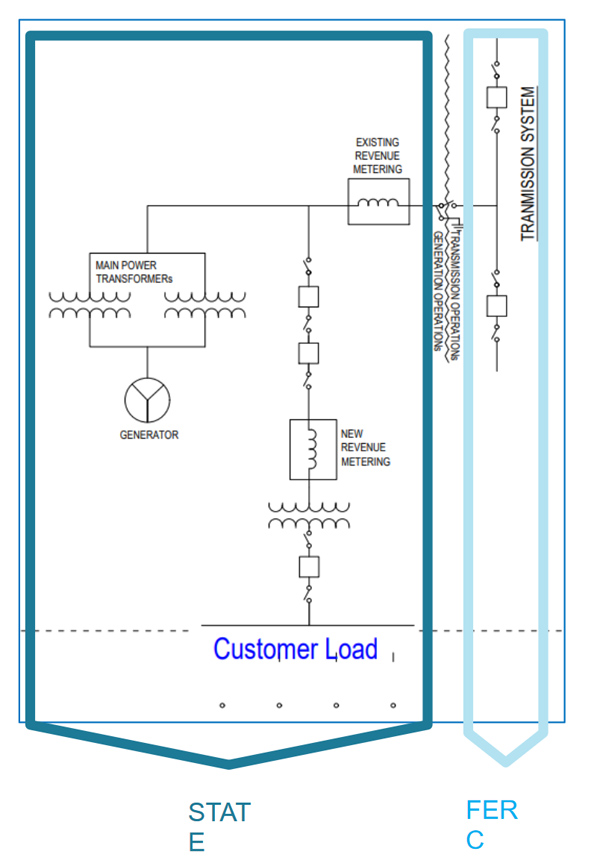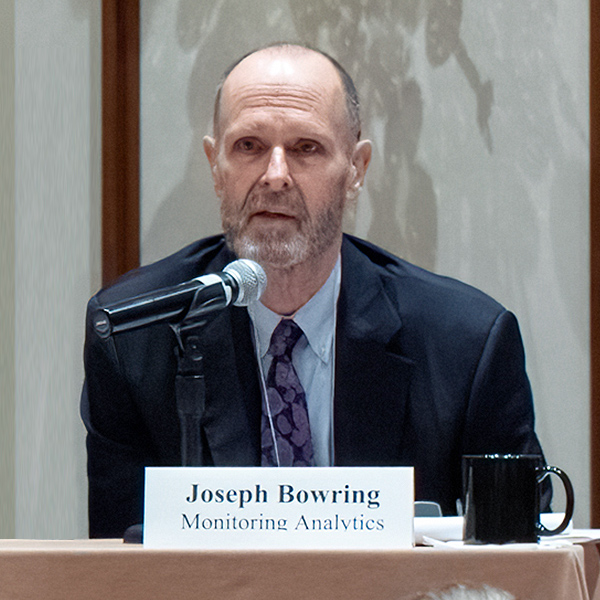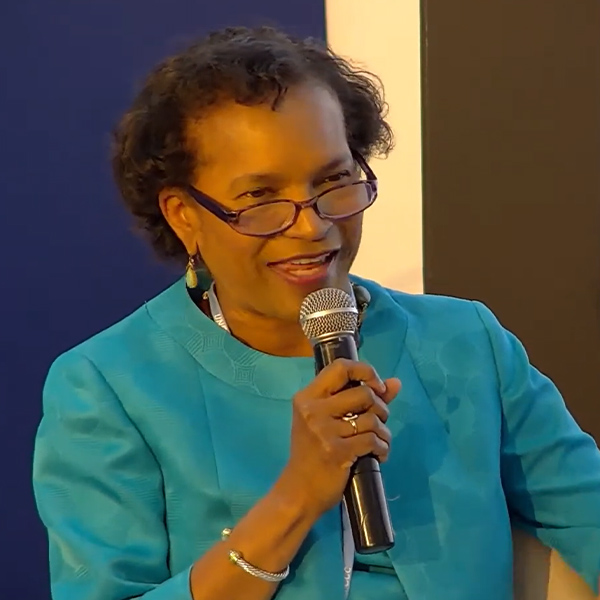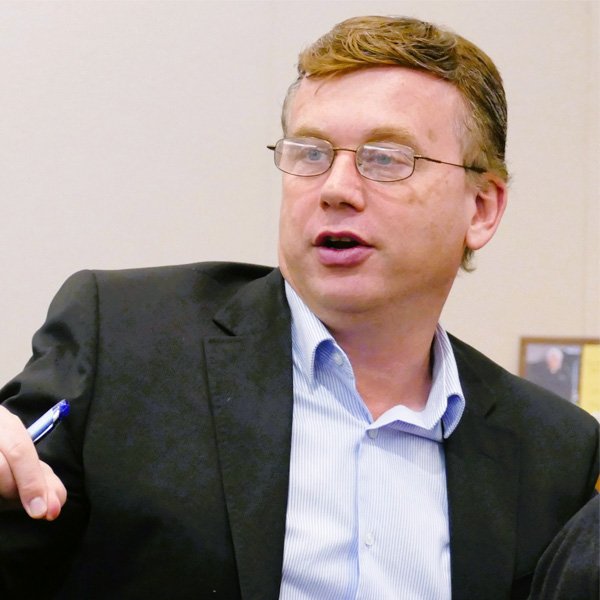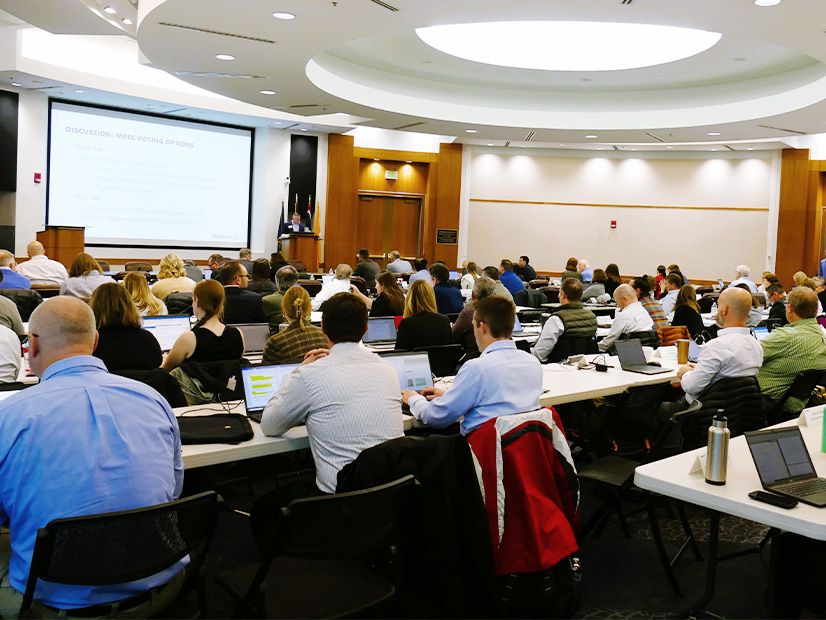MRC Approves VOM Package
The PJM Markets and Reliability Committee endorsed an RTO-sponsored package to standardize variable operations and maintenance costs, with nearly 90% sector-weighted support.
An alternative measure from Constellation Energy — which would have removed nuclear unit refueling as VOM — did not receive a vote during Wednesday’s meeting. (See “Two Proposals Remain on Variable Operations and Maintenance Costs,” PJM MRC Briefs: Oct. 24, 2022.)
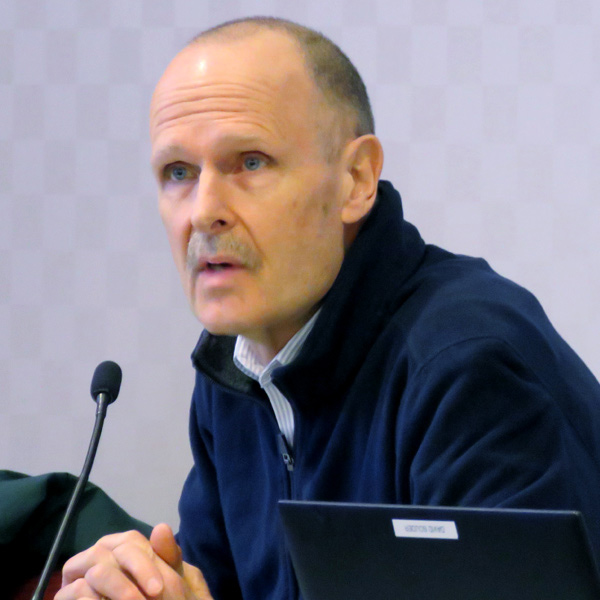 Jason Barker, Constellation Energy | © RTO Insider LLC
Jason Barker, Constellation Energy | © RTO Insider LLC
If accepted by the Members Committee, the language would create default adders for minor maintenance and operating costs as an alternative to generators submitting unit-specific information, and provide definitions of major maintenance and minor maintenance for more clarity on which costs fall into each.
The default adders would be calculated based on historical maintenance values provided to PJM and would be adjusted annually using the Handy-Whitman Index.
PJM accepted a friendly amendment suggested by Adrien Ford of Old Dominion Electric Cooperative to maintain the status quo for the submission deadline, rather than moving it to March as was originally written in the proposal when it was believed the RTO and the Independent Market Monitor would be reviewing submissions in succession rather than parallel.
Constellation’s Jason Barker said the company is in agreement with PJM on the key points of the VOM measure, with the exception of maintenance unique to nuclear units during planned outages, which he said can be scheduled up to three years in advance and does not vary with run time or number of starts.
 PJM Monitor Joe Bowring | © RTO Insider LLC
PJM Monitor Joe Bowring | © RTO Insider LLC
Monitor Joseph Bowring said the costs of major maintenance shouldn’t be included in energy offers, and called the determination from PJM and FERC to do so a mistake, but he disagreed with the notion that nuclear generation should be treated differently from other resources.
Paul Sotkiewicz of E-Cubed Policy Associates said many resource types have the sort of time-based expenses Barker outlined and asked if he would accept a friendly amendment to expand the nuclear carveout to all time-dependent maintenance. Barker responded that the amendment was too large of a change to make on the fly.
The topic isn’t a “make-or-break issue for the nuclear industry,” said Alex Stern,= of Public Service Electric and Gas, but it does make the economics of operating a carbon-free resource harder.
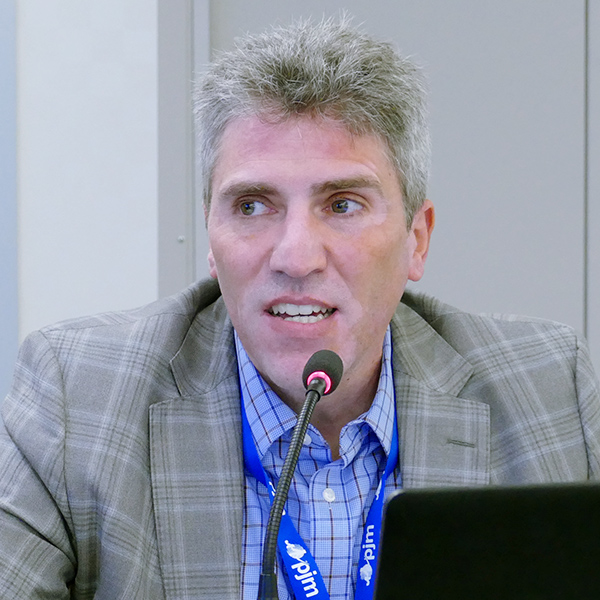 Alex Stern, PSE&G | © RTO Insider LLC
Alex Stern, PSE&G | © RTO Insider LLC
“The country and the region have been spending a lot of time trying to figure out how to preserve zero-emissions generation like nuclear exactly because we need baseload generation as we move toward this changing generation mix, Stern said. “So there’s been a lot of customer expense being thrown at — properly so — trying to preserve reliable generation from nuclear. And I think that the concern here that Constellation is raising is that we’re throwing money at trying to make nuclear economic, but we’re going to take a step here that’s incorrectly putting costs on nuclear.”
Bowring responded that the PJM proposal does not impose any costs on nuclear or make any changes to the economics or margins for resource owners. Rather, it changes the markets to which the costs are assigned, not what they are. “For example, the Constellation proposal does not change the capacity market offer caps for nuclear units in any way. There is no good reason to exempt nuclear units from the rules that apply to all other units.”
Stakeholders Approve Quick Fix for Capacity Replacement Transactions
The committee voted to approve an issue charge and solution under PJM’s quick-fix rules to allow generators to replace capacity sold in a Base Residual Auction in years where there is only one Incremental Auction. The new language was approved by acclamation with two objections.
Michael Borgatti of Gabel Associates, representing Eagle Point Power Generation, said the current compressed timeline, in which there is one instead of three IAs each year, limits the opportunities for generators to engage in replacement resource transactions.
The revisions allow for capacity to be replaced if a “financially and physically firm commitment to an external sale of its capacity for the entire delivery year [has been] demonstrated with supporting evidence.” The changes are limited to currently scheduled delivery years during which there is only one IA scheduled.
Stakeholders expressed some reticence about the use of quick-fix rules to make the change, noting the possibility of those with objections not having adequate time to make their voices heard, but Borgotti said there is limited time to make manual revisions in time for the next auction date.
Bowring pointed out that for any resource facing the referenced issue of wanting to sell capacity outside PJM, there are defined steps in the tariff and in the manuals.
“This proposal provides an incentive to ignore the tariff rules about how to qualify for a must-offer exemption in the capacity market, to offer and clear and then to later withdraw the commitment to sell the capacity. That affects the market prices received by all other market participants,” Bowring said. “Approval of this proposal as a quick fix is effectively saying that any market participant that does not like the rules can come to the MRC at the last second and get the rules changed in their favor.”
Coal Resource Permitted to Enter Maximum Emergency for Fuel Shortages
Stakeholders also approved a manual change to allow coal generators to elect to enter into maximum emergency should their fuel stores fall below 10 days, effectively exempting them from the must-offer requirement while they rebuild their inventories. Facility owners can only make the voluntary determination to seek maximum emergency status from PJM should the fuel shortage be outside of their control and not the result of economic decisions.
PJM’s Chris Pilong said examples of legitimate issues beyond a facility operator’s control are mine fires, floods and tight supply chains. So long as those events are reported to PJM, it can examine whether permitting maximum emergency is warranted. The revisions passed by acclamation with no objections and one abstention. (See PJM Considers Changes to Max Emergency Status for Coal Plants.)
A facility cannot be granted maximum emergency status if PJM has issued a hot or cold weather alert or conservative operations, and the RTO can deny a request for any reason. A generator can remain under maximum emergency until it has reached 21 days worth of fuel inventory, if the owner elects to terminate the condition or if PJM issues one of the aforementioned conditions.
Bowring said there are legitimate reliability concerns related to coal inventories, but the responsibility of taking on and mitigating that risk should fall on the facility owners, not PJM.
“PJM is proposing a short-term fix that is unnecessary and is inconsistent with PJM’s stated objective of providing incentives for flexibility,” he said.
Susan Bruce, representing the PJM Industrial Customer Coalition, questioned if the markets are realizing the full benefits of coal resources if their inventories can’t be guaranteed and said there should be an oversight role to ensure owners are not managing inventories to be economically or physically withholding.
Because the changes were limited to manual revisions, only MRC approval was required, and the changes go into effect immediately.
TCPF Adjustments Permitted for Issues with Ongoing Solution
Stakeholders approved allowing PJM to modify the transmission constraint penalty factor (TCPF) in situations where the issues causing congestion are being addressed by in-progress Regional Transmission Expansion Plan projects. The revisions to the manual, tariff and Operating Agreement were passed by acclamation with one objection.
PJM’s Susan Kenney said the purpose of the penalty factor is to incentivize supply or load to address constraints through short-term solutions and develop long-term investments. When such investments are already underway and there are not feasible short-term solutions, applying the penalty factor may not make sense, she said.
Kenney noted the spark for taking a look at the functioning of the penalty factor came after one of three transmission lines into Virginia’s Northern Neck peninsula was put on outage for a planned upgrade in 2020.
The outage caused congestion into the peninsula, which pushed the TCPF to its default of $2,000/MWh in the real-time energy market. Because the completion of the upgrades would resolve the issue and it wouldn’t be possible for new generation to be added prior to the work being finished, PJM successfully argued to FERC that the design of the penalty factor created “unjust and unreasonable energy market rates” for consumers. (See FERC Approves Pause of PJM Tx Constraint Penalty Factor in Va.)
A second proposal from the IMM would have broadened the criteria for adjusting the TCPF and used a different methodology to determine when to do so, but it received limited support and did not advance from the Energy Price Formation Senior Task Force. Bowring argued during the MRC’s first read of the PJM package that the proposal would allow the RTO to subjectively determine penalty factors and does not address why penalty factors are triggered so often. (See “MRC Discusses Transmission Constraint Penalty Factor Revisions,” PJM MRC Briefs: Oct. 24, 2022.)
1st Read on Proposal to Allow Flexibility for Market Participation During Defaults
PJM presented a first read of a proposal to grant flexibility for parties to continue participating in markets after a default under certain circumstances. The OA currently uses conflicting language regarding market participant involvement during a default, with some sections using “shall” and others saying “PJM may limit,” though Associate General Counsel Colleen Hicks said the OA generally uses mandatory language.
The factors that could warrant allowing continued market involvement are: grid reliability, the ability to generate revenues in the future and the ability to post collateral. A fourth consideration recognizes that certain transmission customers cannot have their service terminated without FERC approval and acts more as a clarification in the package under consideration, Hicks said. The proposal would also modify the tariff with reciprocal provisions.
Other Committee Actions
The MRC also passed with no objections:
- proposed governing document changes to prohibit critical natural gas infrastructure from participating in demand response or price-responsive demand programs. The language was the same as the first read during the Oct. 24 MRC meeting. (See “Reworked Language on Critical Gas Infrastructure Participation in Demand Response Presented,” PJM MRC Briefs: Oct. 24, 2022.)
- proposed tariff revisions that would require that financial transmission rights bilateral agreements to be reported to PJM with certain data within 48 hours of their execution. The primary economic term data that must be reported alongside the agreement includes the FTR start/end, quantity, source and price.
An anticipated vote on packages to create a “circuit breaker” that would limit extended price increases was deferred until the next MRC meeting to give sponsors time to work on the possibility of a compromise package. (See “Support for Circuit Breaker Remains Mixed,” PJM MRC Briefs: Oct. 24, 2022.)
